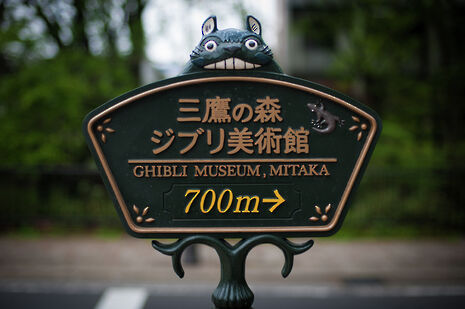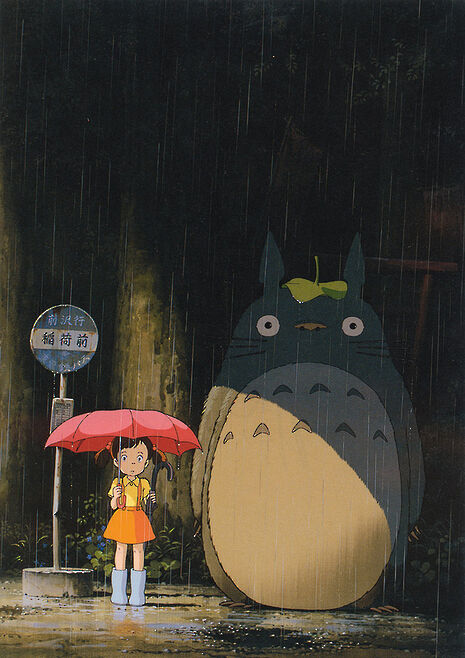Studio Ghibli retrospective
A look at the famous Japanese studio that has created some of the most iconic animated films, blurring the divide between cinema and art.

Starting Wednesday May 4th, the Arts Picturehouse will be showing a weekly film by Japanese animation house Studio Ghibli. This is part of a special season called ‘Studio Ghibli Forever’, which is running until the release of the studio’s latest (and possibly final) film, When Marnie Was There.
Founded in 1985 by directors Hayao Miyazaki and Isao Takahata, and producer Toshio Suzuki, Studio Ghibli has, in many ways, an odd collection of films. Often, they tell stories of magical, otherworldly adventures, but within the mix there are also serious contemplations of the impact of industrialisation, memory, parental loss, the ageing process and above all, a pacifist message that transcends anything else. It is perhaps this which sets Ghibli films apart – that at the heart of each there is a distinct humanity and a value for life, whether of humans, animals, or plants. Studio Ghibli is not all serious, however. In fact, one of the most immediately familiar images to any Ghibli fan is that of characters with their heads thrown back and their mouths wide open in laughter. The films, while terribly human, are also light-hearted and optimistic in a way which makes them profoundly uplifting.
Among the wide array of diverse characters, Ghibli films are well-known for their female leads, especially in Miyazaki’s. That is not to say that gender becomes a topic of discussion within the films – if the leads happen to be girls, then they are. That they are has no bearing on the plot or direction of the film. Moreover, while many Ghibli leads fall into the ‘strong female character’ mould (they’re more than capable of looking after themselves), they exist equally as multi-layered characters with believable strengths and weaknesses in their own right.
Nausicaa of the Valley of the Wind, one of Miyazaki’s earliest films and the first to be shown in the Arts Picturehouse, changed perceptions of the capabilities of animation when it came out in 1984. Nausicaa’s level of detail, especially in the backdrops, was revolutionary. Any still taken from the film contains minute levels of precision amongst sweeping landscape vistas – and bear in mind, this is a film which is now considered a little clunky and rough in comparison to his later work. In Howl’s Moving Castle and Spirited Away, their respective settings (a castle and a bathhouse for the gods) feature detail to such an extent that they almost take on a role of another character. Nausicaa was also the first collaboration between Miyazaki and composer Joe Hisaishi, whose scores equal and at times surpass the beauty of the visuals.

At the heart of Studio Ghibli’s creation process lies the aim to surpass its rivals, quite simply, by creating better quality films, no matter how much it costs or how long it takes. Indeed, the studio has temporarily halted production precisely because it is no longer making enough to produce films of the desired quality they wanted to. Ghibli has notably shied away from becoming too dependent on computers. Miyazaki had all of his films drawn and coloured by hand until Princess Mononoke in 1997, and he went back to an entirely hand-drawn process again with Ponyo in 2008. The studio is very protective of its work when it goes overseas, and refuses to alter the films for the benefit of a western audience - famously, after one of the producers at Disney had suggested changes to the western release of Princess Mononoke, Miyazaki sent him a samurai sword with a note saying ‘no cuts’ attached.
Studio Ghibli films are a feast for the senses, and they are honestly all worth seeing, especially in the cinema. However, as it’s exam term, I’ve selected a few highlights. For Ghibli-newcomers, Spirited Away and Howl’s Moving Castle are the best-known, and best-visually, of the Ghibli repertoire. The latter may be familiar to some from the Diana Wynne Jones book of the same name, while the former is an original story about a girl named Chihiro who must work in a bathhouse to set her parents free. Spirited Away feels the most Japanese of the Ghibli canon, and the plot is refreshingly unique. Grave of the Fireflies (directed by Takahata) tells the story of two children made homeless during WWII bombings. It’s completely devastating, and by far the most difficult to watch of the Ghibli films, but it has certainly earned the title of one of the most important anti-war films of all time. Finally, Kiki’s Delivery Service and My Neighbor Totoro are the most immediately ‘child-like’ Ghiblis, a reminder of the fact that Studio Ghibli exists to make films for children, and does so intelligently. You’ll leave both of these films with a grin all over your face because they are, quite simply, delightful.
 News / Cambridge bus strikes continue into new year16 January 2026
News / Cambridge bus strikes continue into new year16 January 2026 News / Uni members slam ‘totalitarian’ recommendation to stop vet course 15 January 2026
News / Uni members slam ‘totalitarian’ recommendation to stop vet course 15 January 2026 Science / Why smart students keep failing to quit smoking15 January 2026
Science / Why smart students keep failing to quit smoking15 January 2026 Interviews / The Cambridge Cupid: what’s the secret to a great date?14 January 2026
Interviews / The Cambridge Cupid: what’s the secret to a great date?14 January 2026 News / Cambridge local elections to go ahead in May despite local government reorganisation16 January 2026
News / Cambridge local elections to go ahead in May despite local government reorganisation16 January 2026








